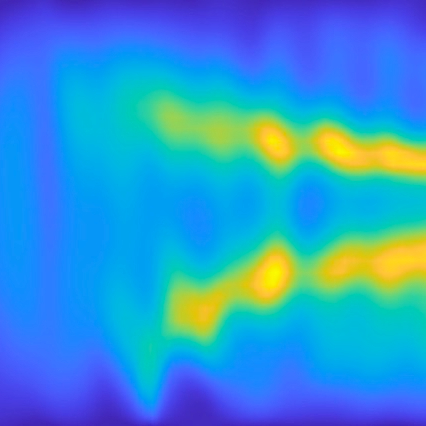Updated: 25-10-2017
|
Computational methods Animation from openPSTD software. |
| Urban propagation effects Propagation effects in the urban environment are investigated for understanding the urban sound environment and to investigate potential noise reduction measures. The effect of measures as façade absorption, walkways, and roof treatments like vegetation roofs and roof screens has been calculated for using the ESM method in a 2.5 approach (paper J04) and the PSTD method for a full 3D urban configuration (paper J08). The PSTD method has been exploited to investigate urban vegetation in a EU-funded project, the effect of greening the buildings on noise levels both in the closed courtyards as on the streets directly exposed to road traffic noise has been studied (papers J10, J11, J20) and the effect of ground roughness constructed out of low-height bricks has been computed (paper J14). Also, the effect of low height noise barrier inside streets has been studied (paper C25) as well as the sound scattering from a tree structure (paper C22). Another application that has been investigated with the numerical methods is the influence of meteorological conditions on sound propagation over de urban roof level (papers J05 and C30). From 2014, research is devoted to investigating the in-situ effect of meteorological conditions (as rainfall) on the acoustic performance of green roofs, and on the acoustic effect of trees in the urban context. 
Urban vegetation as noise reduction measure. |
| Human echolocation Blind people may master the skill of human echolocation, i.e. they can explore their surroundings by listening to self-produced tongue clicks and the acoustical response from the physical environment. In a research project (2013-2015), the ability to successfully carry out echolocation is studied depending on different locations of the acoustic source and the frequency content of the signal.
Dutch TV program ‘de Kennis van Nu’: 19 October 2017 |

Leave a comment